|
So we have hollow logs and trees on our land and this can be a real problem. We honestly had no idea that this was even a thing until we started clearing the land to put our private driveway in. Turns out this is a pretty common problem. It is also a dangerous problem, but I will get to that in a minute.
Why are the trees hollow? This is a question that I needed an answer to. I guess this is why I am a science teacher....I need reasons and answers. I not only wanted to know why, but exactly what causes it, how to prevent it if possible, and how to recognize trees that might be hollow inside and pose a danger. Ok, so the reason they are hollow is because they literally have a fungus eating them from the inside out. Yup, sounds gross. But apparently that is what it is. It is sometimes called heart rot because it is eating away at the 'heart' of the tree. There are actually different circumstances that can cause the fungus to eat away at the inside of the tree quite rapidly. For example, too much water will allow the fungus to thrive and this was one of the most common answers I was given when I asked people who live in the Adirondacks - it's caused by too much water. The answer makes sense if you have ever been in the Adirondacks in the spring. Have you ever heard of the muddy season? When the snow melts the Adirondack park becomes a giant mud puddle. It was even hard to walk around our land in the spring - only high spots could be navigated without sinking in. But the water just helps the fungus to grow, it is not the cause.
What causes the fungus?
The Adirondacks can be a pretty dangerous place when the weather suddenly changes and the winds pick up. Especially in the spring when the ground is so wet and soft. The trees tend to be very tall and the roots are not necessarily deep due to the bedrock being near the surface in a lot of areas. During this time trees can fall very easily. Seriously, I know this first hand. We were hiking around our land this past spring when this happened. I was standing in what is not our clearing listening to trees crack as they began to fall. It was one of the scariest moments in my life. I heard it, but I didn't know where it was. I just stood still urning in circles to see what was falling so I would know if I needed to run or not. Luckily it fell a good 20' away from me. I was also fortunate that it did not hit another tree and cause it to also fall (also a very common occurrence). So anyway, as we spend more and more time on our land we are learning more and more about the dangers that lurk beyond the beauty and peace of it all. So back to the fungus. When winds blow and trees fall, branches also tend to break. Trees can also be damaged by vehicles and work equipment, and even humans when clearing a path. Anywhere a branch has been broken or cut off an open wound is literally left behind for the fungus to grow and enter the tree. The fungus is always out there and is referred to as shelf fungi or fungal conks. They come in different shapes and sizes and can also be beneficial in some ways. However, the conks are how we are going to be able to identify the trees that are most probably hollow. All we have to do is identify the trees with a lot of conks going up it and that would be the one we want to cut down because it is not healthy and has the potential to fall easily in the next storm.
What to do?
Well, we will begin harvesting the trees that we believe to be hollow or damaged and we will use the wood! It could simply be burned, but we prefer to be more creative. I have already made some beautiful picture frames (video and post coming soon) and we have plans to make some end tables and maybe even a coffee table. Nothing goes to waste! Even the soft material inside is great for the garden! Check out the video we made of us harvesting the wood, laying it out to dry, and even cutting a few slices to make picture frames and please subscribe to our YouTube channel! It would help us out a lot :-)
Here is a video of the photo frames I made with some of the slices my husband cut:
Thanks for visiting!
Sincerely,
Sources:
2 Comments
So we recently had a new well drilled on the homestead we are building from scratch and despite going down 680', we are only yielding about 1/2 gallon per minute. Ideally a well should get 5 gallons per minute or more so we are not anywhere close to what we really want, or need for that matter. So now what?
This leaves us with a couple of options.
Here is a video we made about the process so far:
And our decision....
Thanks for visiting!
Please remember to follow us on social media! Sincerely,
Well, it's official. Our land is cleared for building! The road has been completed and now we have about a 1.25 acre clearing to begin building our future homestead.
There is still a lot to do though. We are meeting with the well drilling company this weekend and we are still waiting to meet with an engineer to design our septic system. Yes, this is a new thing as per the New York State Board of Health. Everyone needs a system designed by a specially licensed (NYS) engineer. Of course that means that you can't hire any ole' engineer. Only an engineer that has taken a special septic design certification in New York State. Ugh...very annoying. Anyhoo....the engineer we want is so backed up they can't even come until mid August or later! So we will just have to wait. We have also made our application to National Grid to have underground electric, but of course this is on hold because of the septic. We didn't know it originally, but if we have three out of four things (foundation, road, well, and/or septic), National Grid will cover a nice chunk of the cost of underground installation including the transformer, and a cost equal to 100 feet of above ground wire connection. That totals a few thousand dollars (And an additional savings of the $800 fee we would have had to pay for temporary service.). So, bottom line, the electric is on hold! No brainer there. But either way, we are off to a great start. We have a road. We have a clearing. And we put our little trailer on the land so we can now enjoy it even more! Check out our latest YouTube video showing the land clearing and please, subscribe to our channel to stay up to date on all future videos!
Sincerely,
So, we joined a collaboration on YouTube for the first time. This is very exciting for us because it is the first time that we have connected with other homesteads around the world. It is really fascinating to see all the different ways of homesteading there are today. From small homesteads like ours here on Long Island, to really large homesteads with hundreds of acres, everyone is different, but the common theme is the same: they all want to be self sustainable. This is a really big deal today because there is so much dependence upon the world for basic survival that to do it like the pioneers did has become really important to individuals, couples, and families, that only want to depend upon themselves.
In our video below we talk about the homestead we currently live on that is located on Long Island in New York, USA and we talk about the homestead we are currently building in the Adirondack Park of New York for our retirement in a few years!
If you enjoy it and are interested in upcoming videos please subscribe to our YouTube channel "Creating A Simpler Life."
About The Collaboration:
The collaboration was started by two homesteads as a way to connect with other homesteads so that everyone can share what it is like to homestead where they are located because who knows, maybe someone else might want to try homesteading there too! Check out there YouTube channels and their videos below and subscribe if you like what you see!
The collaboration is open to any homestead around the world that wants to make a video and join the playlist. They really want participation from different countries and different states. The more the better! No matter how big or small your homestead is, you can join. You simply need to answer a series of 15 questions (see below) and upload a video to your YouTube account. There are particular ways of titling the video and you will need to reach out to Danny and Wanda and/or Liz to have them share your video on their playlist. You will also need to create your own playlist and add all the other videos that have already been contributed.
Questions To Answer:
No experience making videos? Nobody cares! You can use a cell phone, a camera, or even set up your computer to record. It doesn't matter and it's never too late to try!
Thanks for visiting!
We hope you click the like button and join us on our journey to creating a simpler life now, and for our future retirement in the Adirondacks! Sincerely,
We have bats. I know for a fact because they have literally flown past my head. This mostly happens ad dusk when we are swimming in the pool. The bugs just love to hover right above the surface of the pool so the bats just love to swoop in and "chomp" on them! I don’t mind though. In fact, I am actually thrilled because with all the mosquito born illnesses being discussed on a daily basis in the news we certainly want to get rid of them. So we welcome the bats because, well, they eat this nasty mosquitoes right up!!!
Think about it. Have you ever heard anything good about mosquitos? I certainly haven't. I just 'googled' the question and the only good thing that came up is that they are part of the food web. Yup, they are good food for birds, fish,frogs and, of course, bats! Their purposes on Earth is to be food for other animals. Sort of the bottom of the food web. So I guess it makes sense that we (humans I mean) do everything we can to either get rid of or to minimize their presence. On a community level they spray neighborhoods regularly where we live. I don't really like this, but even with the spray the mosquitoes are horrible. On a personal level people use all kinds of sprays and lotions, burn citronella candles, buy mosquito zappers, and more. In our yard we make sure there is no standing water, we make natural DIY mosquito repellant (essential oil recipe here), and of course use citronella in lots of places. And now, we finally have a bat house that holds up to 100 bats! But we are not hanging it at our current house, we are hanging it on our future homestead! Yes, that's right, we have decided to hang the bat house on our land in the Adirondacks. We chose to do this because the summer is when the mosquitoes are the worst and last summer when we were working on the land we were literally eaten alive. So this summer we are hoping to decrease the mosquito population by luring bats in the area where we plan to build our house. Check out our video on You Tube of How NOT to Hang a Bat House:
What are the benefits of a bat house?
What are the negatives?
Check out our YouTube video about why you NEED a bat house! Please be sure to subscribe to our YouTube channel for future videos!
What next?
Buy or build a bat house – some links for plans and some links to buy it 1. Build a Bat house with one of these plans: - Single Chambered Bat House by Bat Conservation International - Plans, Tips and More from from the Organization for Bat Conservation 2. Buy a Bat house at this link (same one I have): - Single Chamber Bat House by Organization for Bat Conservation $49.99 Paint the Bat House: Depending upon where you live and the average temperatures, the color you paint it will vary. We painted ours black because of our location.
Hanging the Bat House
If You Build it They Will Come....Maybe
"What?" After all that work there is a chance that no bats will move in? This is true, thats a possibility. So here's how to increase your chances of having bats move in:
Update! We have purchased a new ladder (Gorilla Ladder 22') and relocated the bat house! Check out our new video of us using the ladder to relocate the bat house :-)
Thanks for visiting!
I would love to hear if you have a bat house and how it has worked out for you :-) Check out our Bats and Bat Houses Pinterest page for more information and tons of other plans and ideas. Sincerely,
Sources:
http://www.cdc.gov/rabies/bats/education/ www.mayoclinic.org/diseases-conditions/histoplasmosis/basics/definition/con-20026585
There is simply nothing that compares to sleeping under the stars (sort of) on your own land for the first time! That is exactly what we did recently and I can honestly say we really didn't want the weekend to come to an end. With no cell phone service, no electric and no running water (other than our little creek) we were in our glory staying overnight. Even with the temperatures dipping down below 27°F our newlywed children were perfectly fine sleeping in their little tent!
None of us can wait until we can do it again! Really :-)
We loved camping out so much that we can't wait to do it again!
Read more about our land and our future Homesteading Dreams here. Sincerely,
Choosing our homesite was pretty easy, in fact it is the reason why we chose to buy this land in the first place (read more here). However, a road, well thats a different story. With 30 acres of land I can honestly say we have yet to venture through all of it. There is much that we have yet to see, but the more we hike around the happier we are! Recently we were hiking around and found what appeared to be roads even though they had some trees fallen onto them. We realize now that these are old logging roads from many, many years ago. And believe it or not one of them goes right to the homesite we chose! This was so perfect a find that it solidified for us that we chose the perfect spot for our home. All we had to do was some general clearing so we bought a chainsaw and started clearing all the fallen trees and debris on the old road to the homesite! The road is wide enough to drive in with our 4 wheel drive jeep and truck. The only thing left to do is remove a few rocks and make a better 'bridge' over our somewhat seasonal stream! For now, however, it is the perfect rough road for our ATV!
I really wish we did before and after pictures, but we just weren't thinking since we were so excited to get started! Anyway, you can see the cleared road pretty well below. The flags are there so we could keep track of how wide we want it and a few rocks or stumps that we still need to remove. We also made a temporary bridge of some of the cut logs so the ATV could easily cross the seasonal stream. The first 300 feet was basically cleared already and just needed to be weed wacked (yes we used a handheld one and swung it back and forth) and we worked our #4@# off to clear another 400 feet beyond that and up the hill so now we have a driveway of about 700 feet to our homesite. It was a lot of work for the two of us over the course of a two day weekend so hopefully next time our adult kids will come along to help! After all, they are each getting 5 acres of their own :-)
A few words on chainsaw safety: Take the time and spend the money to do it right! Here is the equipment we purchased for my husband (or myself) when using the chainsaw:
Well that's another mini-step crossed off of our to-do list for our homestead! We set a goal for buying a truck this fall and we can now check it off! And of course, having a truck really will simplify our lives in so many ways.
Here's how and why:
I am sure we will find many other reasons why having a truck is necessary in the Adirondacks. A few off the top of my head: it will make it easy to get our canoes and kayaks to the local River and it will be the perfect travel space for the dogs we plan on adopting one day (can't wait)!
Read more about our future homestead dreams here!
Sincerely,
Choosing our homesite was pretty easy. With the type of home we are building, the homesite was pretty much one of the most important determinations with respect to the property we purchased (Read more about the land we purchased here).
We plan on building an earth sheltered home. This means that all, yes all, of the windows will need to be south facing to make the most of solar gain in the winter (we have plans for special windows to minimize gain in the summers, more on that in a later post). Also, even though it is an earth sheltered home we intend to have an entrance on the north side as well (most earth shelters only have an entrance on the south side). For those two reasons we needed a bermed location with a small slope to the north, but a larger slope to the south so we could 'blast' through it and have a level north entrance, but the other side would be all windows facing south. All trees to the south would also need to be cleared to allow full access of the sun all day. If all goes well will will just need to add some dirt over the top of the home! I know this sounds a little confusing, but you can check out these earth sheltered homes by Formworks in Colorado to see what we are sort of planning. We are in the process of working on plans with them and I will share those soon! 
This is the site. This is facing due south. We would need to cut through this small berm. The other side of the berm goes downhill for several hundred feet so we will have quite a bit of forest to clear. I know it is all hard to see/visualize, but since the house is relatively small (32 x 28) it should really work just right!
We have a plan for our future homestead: to plant with purpose. That purpose will be edible landscaping. Basically, if the plant is edible and an easy to maintain perennial, it is in! That doesn't mean we won't be planting a few other plants for medicinal or even decorative purposes, it just means that most all of our planting on our homestead will be done with prior careful thought and purpose. That brings me to todays post.
One the years my husband and I have planted many different types of plants at our suburban house for many different reasons: pretty, suggested by friends or family, free from others, or transplanted from somewhere else. Unfortunately there was little to no research on any of these plants prior to planting, and well, we regret it now because they are impossible to get rid of and a real pain in the neck to maintain. Some of the plants actually came with the house when it was purchased, and again, we didn't think much about them at the time. Either way these plants have provided us with not only a great learning experience, but a list of plants TO NEVER PLANT on our future Homestead! Here's our list:
WISTERIA
I absolutely love how wisteria looks and smells in the spring. It is so beautiful the way it drapes down and hangs and to walk past it and smell the aroma is, well, heavenly. But...that only lasts for about a week. And. That. Is. Not. Worth. It. The rest of the year I am chasing down the runners that spread 30 feet or more all over the yard, up trees, into the neighbors yard, all over the fence, and even into my pool once while we were away! I can't even begin to describe how horrible this plant can be all for the reward of one weeks worth of beauty. It's simply not worth it. And, once it's planted you can absolutely never, ever, get rid of it! It will be a lifetime of maintenance and the plant will, literally, outlive you! if yore interested and willing to do the work you can learn more about wisteria here.
YUCCA
The yucca plant is well, yucka! I absolutely hate it. Yeah, the flowers look kind of pretty but they attract so many ants that they become ugly really quickly! And cutting those long nasty stalks covered in ants really stinks. The leaves are pointy and sharp and can really hurt you too. And seriously, trying to get rid of the plant is impossible. It spreads too easily and seriously, the leaves need a 'hair cut" every spring! The work to pleasure ratio just isn't there for me! Oh, and I did my research and this is not the edible species of yucca. Some yucca have edible parts, but this is NOT the one so bye bye yucca! Read more about the difference between the yucca and yuca plants and their usable parts here.
BLACKBERRY
Blackberries are delicious, but picking them really is the pits. We planted a blackberry bush a few years ago that we got on sale in Home Depot. HUGE mistake. It grows like crazy, has the nastiest and sharpest prickers, and we absolutely can't get rid of it no matter how many times we "excavated" it out of the ground. When we bought this blackberry bush we had no idea there were different kinds and that some are invasive. Apparently there are ways to tell the species apart - the invasive ones have a hexagonally shaped stem with flattish sides. Who knew? Well, now we do, but either way the thorns are terrible so unless there is a thornless variety that is not invasive, blackberries will never be planted on our homestead! Read about invasive and non-invasive blackberries here.
CLIMBING HYDRANGEA
Where to start? Yeah, it looks pretty nice around our little front porch but it does need to be cut at least twice a year, the flowers aren't that pretty (and only grow in the sunlight so only the right side gets any flowers), and they don't even smell that good! The stems become like mini trees and literally rip the porch apart as they wrap around it and through it. They are also ripping the rain gutters off the roof! Finally they have these little tiny roots on all the shoots that literally grab onto anything so they can climb. Pretty interesting, but this means you literally have to rip it off sometimes. Again, too much maintenance for relatively minor return. Not worth it in my opinion. Here's more info on climbing hydrangeas if you are interested.
TRUMPET VINE
What. A. Nightmare. As pretty as this looks, it is a real pain to maintain. It can send runners out up to 10 feet (or ore) away that literally pop out in the middle of the lawn! This would literally take over my entire front yard if I let it. The flowers are pretty but they attract a lot of ants and other critters and it constantly needs to be 'trimmed.' Way too much work to simply keep it under control. Read more about trumpet vines here.
PRIVET HEDGES
I have a love-hate relationship with my privet hedges. Here in the suburbs I love the privacy they provide me in my backyard (hence their name), however with 50' feet of them on one side and about 20' on the other, it is a lot of work to keep them maintained. Believe it or not I used to have about 70' of them across the front of my house too, but we ripped those out. We used to keep them trimmed ourselves but they are currently about 10 feet high and we just can't keep up with it anymore. This means we pay to keep them looking ok each season. And that is just ok because they really should be trimmed twice a year. Thankfully on our new homestead there will be no need for any privacy barriers since we will be building literally in the middle of our 30 acres! We won't have any close neighbors at all! Read more about privet hedges here.
ENGLISH IVY
These are great for growing on fences because it looks nice by kind of hiding the fence but it spreads and grows like crazy and I find myself ripping it out every season as it reaches for all my other plants and bushes around it. There is a tree in the neighbors yard that is actually being choked to death by this ivy and we worry that it will die and fall in our pool at some point. In my opinion it just requires too much maintenance. Read more about English Ivy here.
Thanks for visiting!
Read more about our future homestead garden here and follow me on social media! Sincerely,
|
Hi there! I'm Kathie, the author behind Creating A Simpler Life blog. I'm excited to share our longterm projects (and planning) toward building our future retirement homestead in the Adirondack Mountains of New York. In the meantime I will be sharing all the other little things we do that are part of creating our simpler life!
Categories
All
Archives
July 2020
|



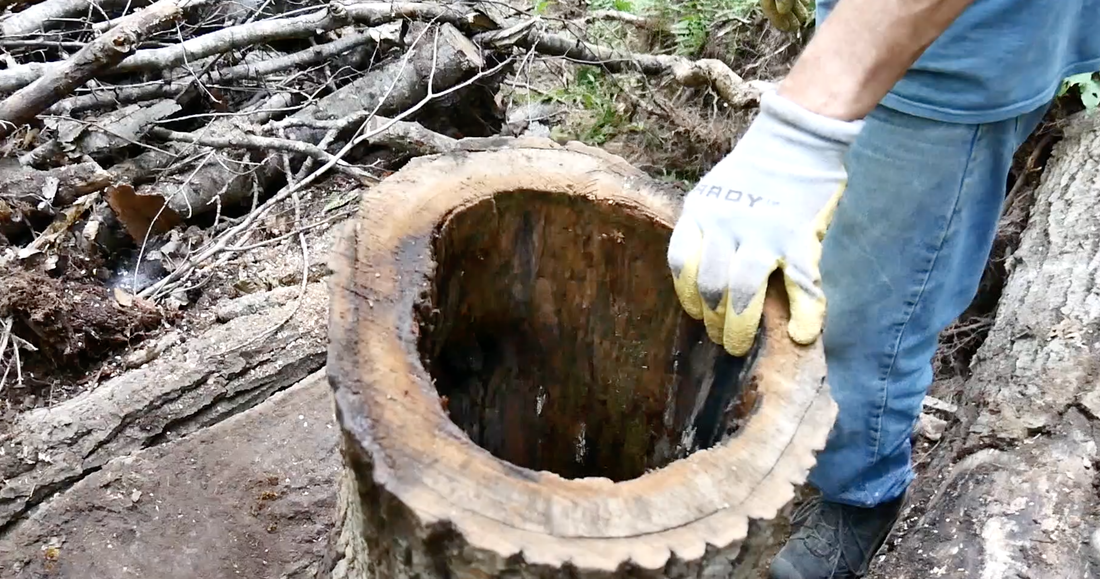


















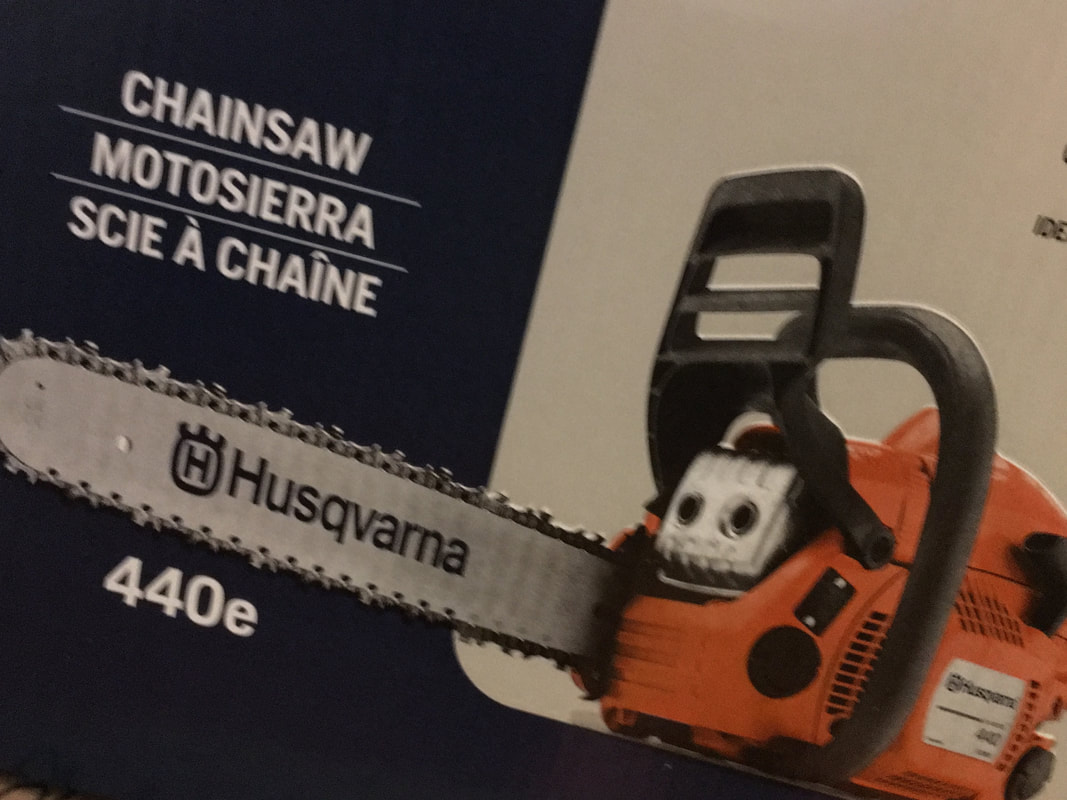

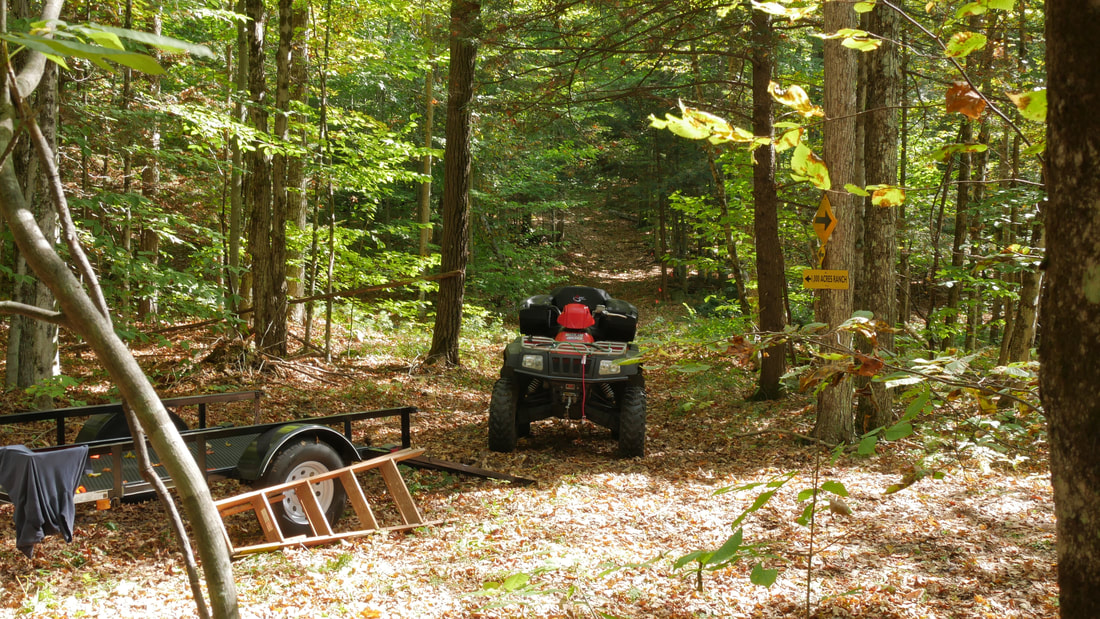
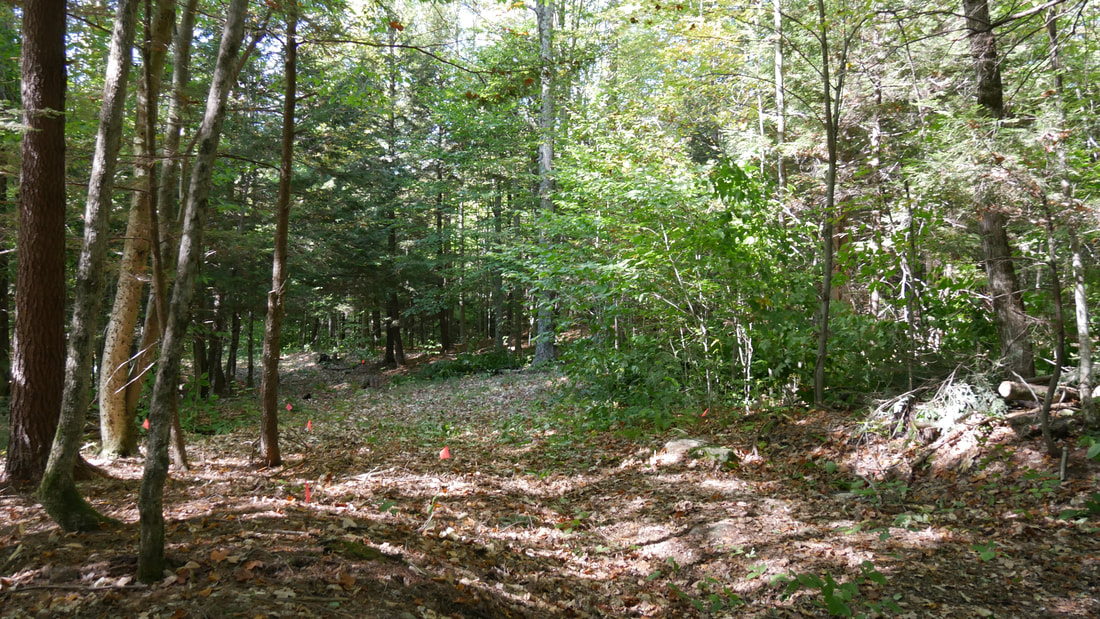








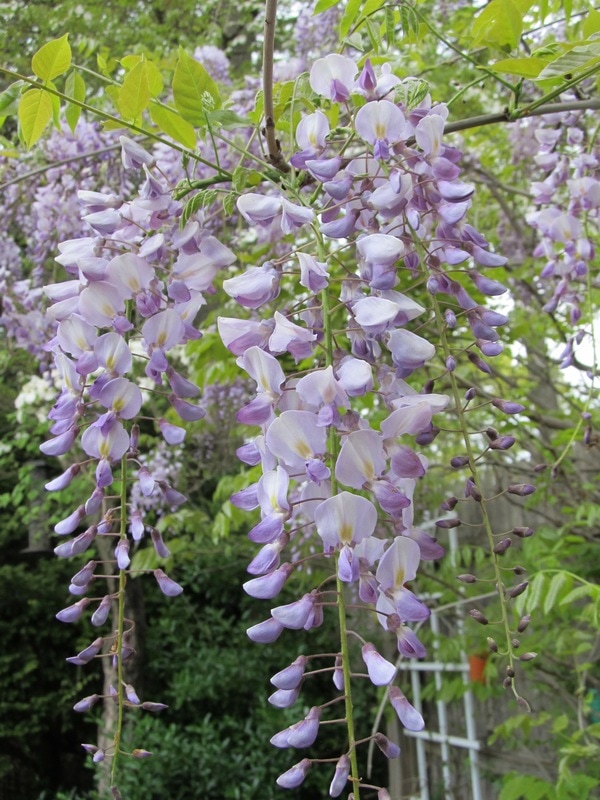

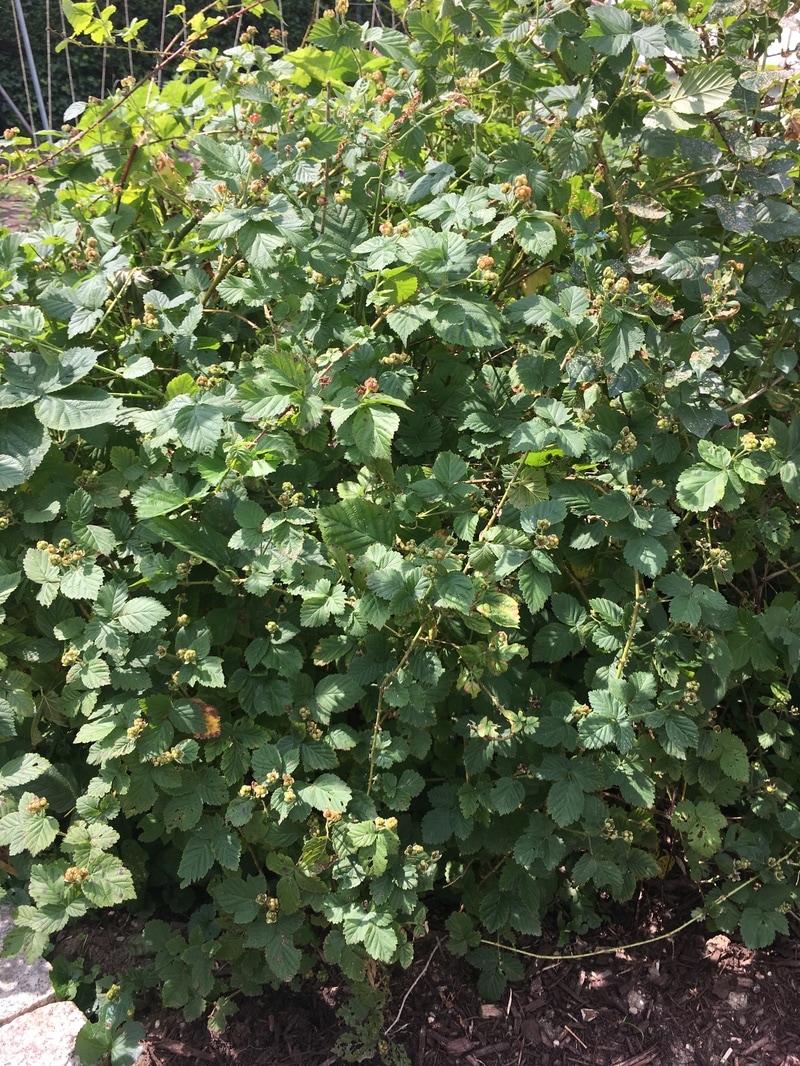






 RSS Feed
RSS Feed